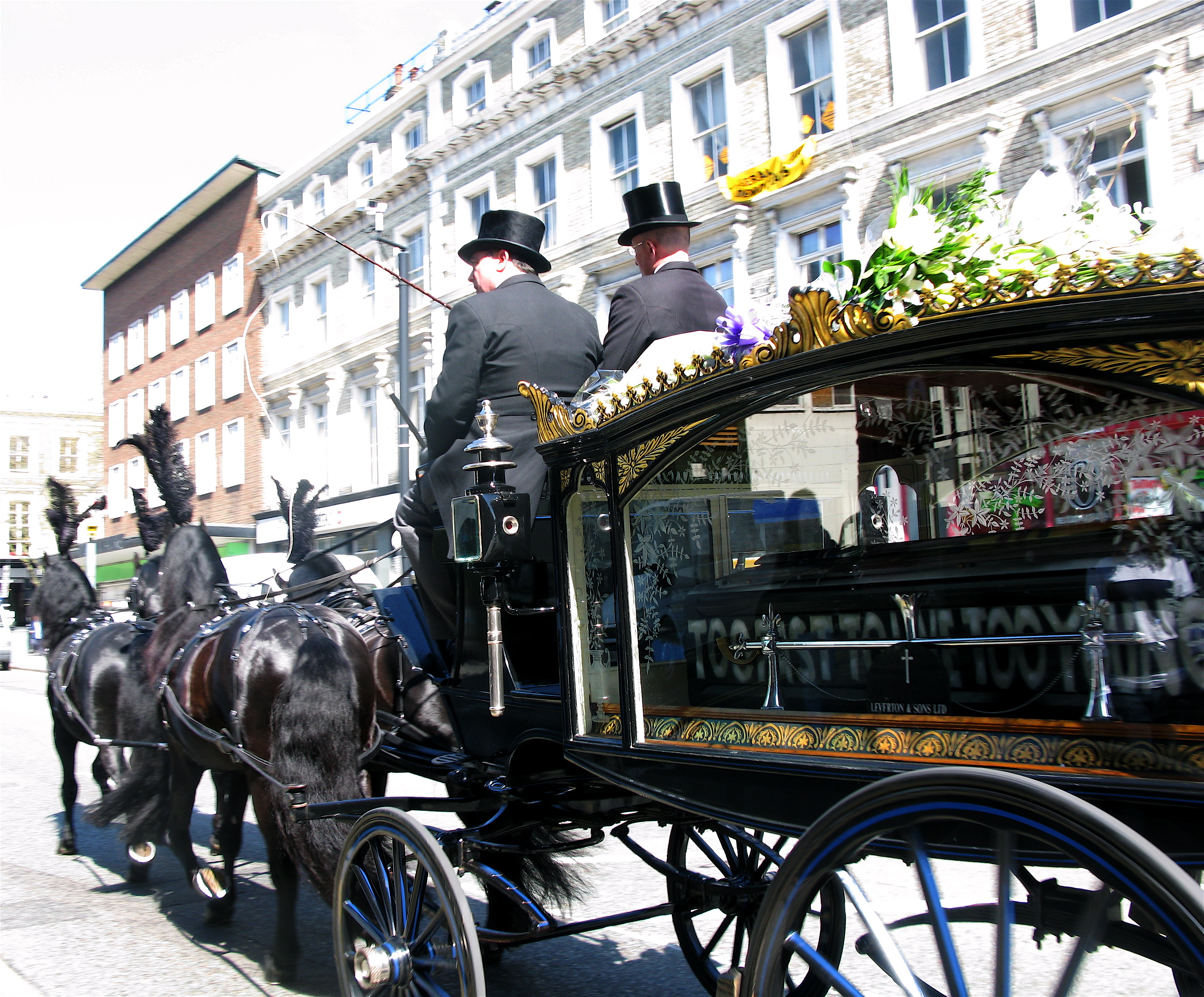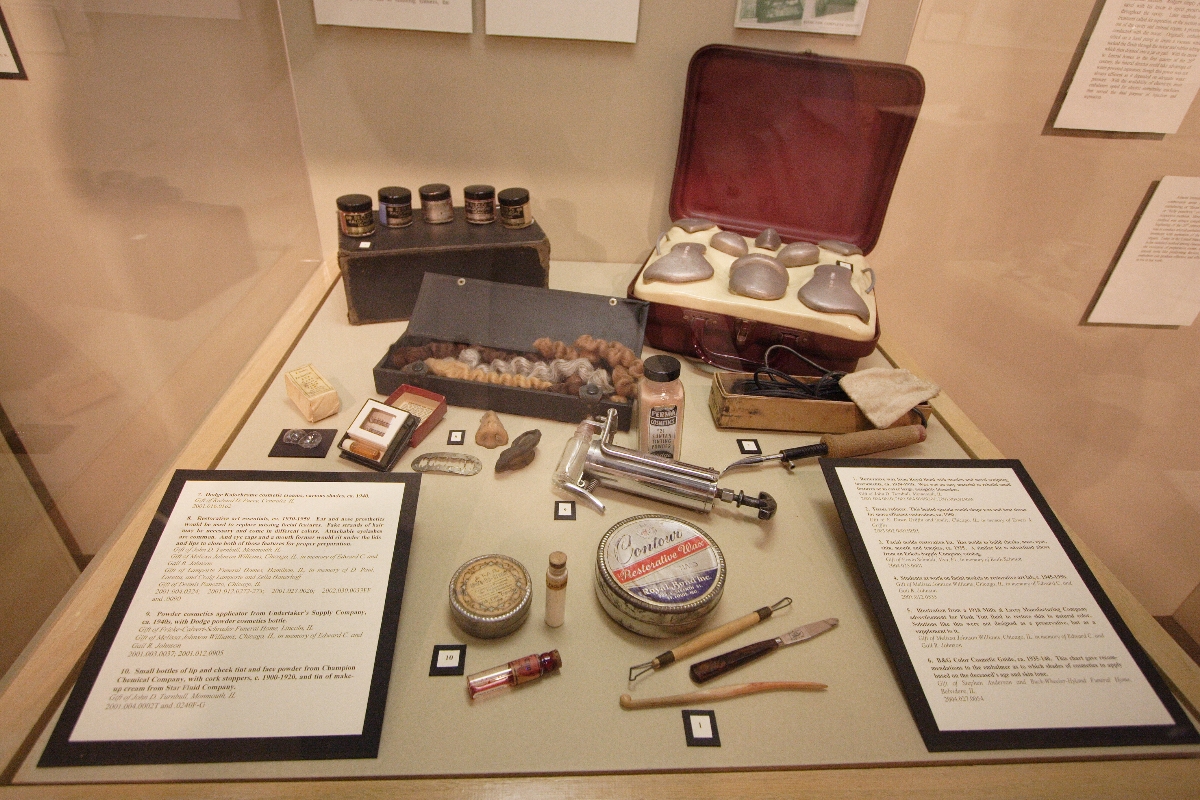funeral director on:
[Wikipedia]
[Google]
[Amazon]

 A funeral director, also known as an undertaker (
A funeral director, also known as an undertaker (
Most require a combination of post-secondary education (typically an associate's degree), passage of a National Board Examination, passage of a state board examination, and one to two years' work as an
https://www.fsac.ca/]
British English
British English (BrE, en-GB, or BE) is, according to Oxford Dictionaries, "English as used in Great Britain, as distinct from that used elsewhere". More narrowly, it can refer specifically to the English language in England, or, more broadl ...
) or mortician (American English
American English, sometimes called United States English or U.S. English, is the set of varieties of the English language native to the United States. English is the most widely spoken language in the United States and in most circumstances ...
), is a professional involved in the business of funeral
A funeral is a ceremony connected with the final disposition of a corpse, such as a burial or cremation, with the attendant observances. Funerary customs comprise the complex of beliefs and practices used by a culture to remember and respect ...
rites. These tasks often entail the embalming and burial
Burial, also known as interment or inhumation, is a method of final disposition whereby a dead body is placed into the ground, sometimes with objects. This is usually accomplished by excavating a pit or trench, placing the deceased and objec ...
or cremation
Cremation is a method of Disposal of human corpses, final disposition of a Cadaver, dead body through Combustion, burning.
Cremation may serve as a funeral or post-funeral rite and as an alternative to burial. In some countries, including India ...
of the dead, as well as the arrangements for the funeral ceremony (although not the directing and conducting of the funeral itself unless clergy are not present). Funeral directors may at times be asked to perform tasks such as dressing (in garments usually suitable for daily wear), casketing (placing the corpse in the coffin), and cossetting (applying any sort of cosmetic or substance to the best viewable areas of the corpse for the purpose of enhancing its appearance). A funeral director may work at a funeral home or be an independent employee.
Etymology
The term mortician is derived from the Roman word ''mort-'' (“death”) + ''-ician''. In 1895, the trade magazine ''The Embalmers' Monthly'' put out a call for a new name for the profession in the US to distance itself from the title ''undertaker'', a term that was then perceived to have been tarnished by its association with death. The term ''Mortician'' was the winning entry.History
As the societal need to account for the dead and their survivors is as ancient as civilization itself, death care is among the world's oldest professions. Ancient Egypt is a probable pioneer in supporting full-time morticians; intentional mummification began 2600 BC, with the best-preserved mummies dating to 1570 to 1075 BC. Specialized priests spent 70 full days on a single corpse. Only royalty, nobility and wealthy commoners could afford the service, considered an essential part of accessing eternal life. Across successive cultures, religion remained a prime motive for securing a body against decay and/or arranging burial in a planned manner; some considered the fate of departed souls to be fixed and unchangeable (e.g., ancient Mesopotamia) and considered care for a grave to be more important than the actual burial. Inancient Rome
In modern historiography, ancient Rome refers to Roman people, Roman civilisation from the founding of the city of Rome in the 8th century BC to the collapse of the Western Roman Empire in the 5th century AD. It encompasses the Roman Kingdom ...
, wealthy individuals trusted family to care for their corpse, but funeral rites would feature professional mourners: most often actresses who would announce the presence of the funeral procession by wailing loudly. Other paid actors would don the masks of ancestors and recreate their personalities, dramatizing the exploits of their departed scion. These purely ceremonial undertakers of the day nonetheless had great religious and societal impact; a larger number of actors indicated greater power and wealth for the deceased and their family.
Modern ideas about proper preservation of the dead for the benefit of the living arose in the European Age of Enlightenment
The Age of Enlightenment or the Enlightenment; german: Aufklärung, "Enlightenment"; it, L'Illuminismo, "Enlightenment"; pl, Oświecenie, "Enlightenment"; pt, Iluminismo, "Enlightenment"; es, La Ilustración, "Enlightenment" was an intel ...
. Dutch scientist Frederik Ruysch's work attracted the attention of royalty and legitimized postmortem anatomy. Most importantly, Ruysch developed injected substances and waxes that could penetrate the smallest vessels of the body and seal them against decay.
Historically, from ancient Egypt to Greece and Rome to the early United States, women typically did all of the preparation of dead bodies. They were called "Layers out of the dead". Mid nineteenth century, gender roles within funeral service in the United States began to change. Late nineteenth century it became a male dominated industry with the development of Funeral Directors, which changed the funeral industry both locally and nationally.
Role in the United States
As recently as 2003, 15 percent of corporately owned funeral homes are owned by one of three corporations. The majority of morticians work in small, independent family-run funeral homes. The owner usually hires two or three other morticians to help them. Often, this hired help is in the family, perpetuating the family's ownership. Other firms that were family-owned have been acquired and are operated by large corporations such asService Corporation International
Service Corporation International is an American provider of funeral goods and services as well as cemetery property and services. It is headquartered in Neartown, Houston, Texas, and operates secondary corporate offices in Jefferson (New Orl ...
, though such homes usually trade under their pre-acquisition names.
Most funeral homes have one or more viewing rooms, a preparation room for embalming, a chapel
A chapel is a Christian place of prayer and worship that is usually relatively small. The term has several meanings. Firstly, smaller spaces inside a church that have their own altar are often called chapels; the Lady chapel is a common type ...
, and a casket selection room. They usually have a hearse for transportation of bodies, a flower car
A flower car is a type of vehicle used in the funeral industry of the United States, frequently under the Cadillac brand.https://www.hemmings.com/stories/article/you-dont-bring-me-flowers/amp It is used to carry flowers for the burial service, or ...
, and limousine
A limousine ( or ), or limo () for short, is a large, chauffeur-driven luxury vehicle with a partition between the driver compartment and the passenger compartment.
A very long wheelbase luxury sedan (with more than four doors) driven by a pr ...
s. They also normally sell caskets and urns."Funeral Directors." Occupational Outlook Handbook, 2006-07 Edition. 4 Aug, 2006. Bureau of Labor Statistics, U.S. Department of Labor. 8 Dec, 2008. Organizations and licensing in the United States
Licensing requirements in the US are determined at the state levelMost require a combination of post-secondary education (typically an associate's degree), passage of a National Board Examination, passage of a state board examination, and one to two years' work as an
apprentice
Apprenticeship is a system for training a new generation of practitioners of a trade or profession with on-the-job training and often some accompanying study (classroom work and reading). Apprenticeships can also enable practitioners to gain a ...
.
Role in the UK
The role that a funeral director will play in the UK includes most of the administrative duties and arrangement of funeral service, including flower arrangements, meeting with family members, overseeing the funeral and burial service. This does not include embalming or cremation of the body until further training is completed.Organizations and licensing in the UK
In the UK no formal licence is required to become an undertaker (funeral director). There are national organizations such as the British Institute of Funeral Directors (BIFD), the National Association of Funeral Directors (NAFD) and the Society of Allied and Independent Funeral directors (SAIF) The BIFD offers a licence to funeral directors who have obtained a diploma-level qualification - these diplomas are offered by both the BIFD and NAFD. The British institute of embalmers (BIE) offer Embalming training and qualifications All of the national organizations offer voluntary membership of "best practice" standards schemes, which includes regular premises inspection and adherence to a specific 'code of conduct' These organizations help funeral directors demonstrate that they are committed to continual personal development and they have no issue with regulation should it become a legal requirement 3Role in Canada
The role of a funeral director in Canada can include embalming, sales, oversight of funeral services as well as other aspects of needed funeral services.Organizations and licensing in Canada
A funeral director in Canada will assume many responsibilities after proper education and licensing. Courses will include science and biology, ethics, and practical techniques of embalming. There are a number of organizations available to Canadian funeral directorhttps://www.fsac.ca/]
Employment opportunities
Mortuary science graduates may have to relocate to find jobs.References
{{Authority control Persons involved with death and dying Sales occupations